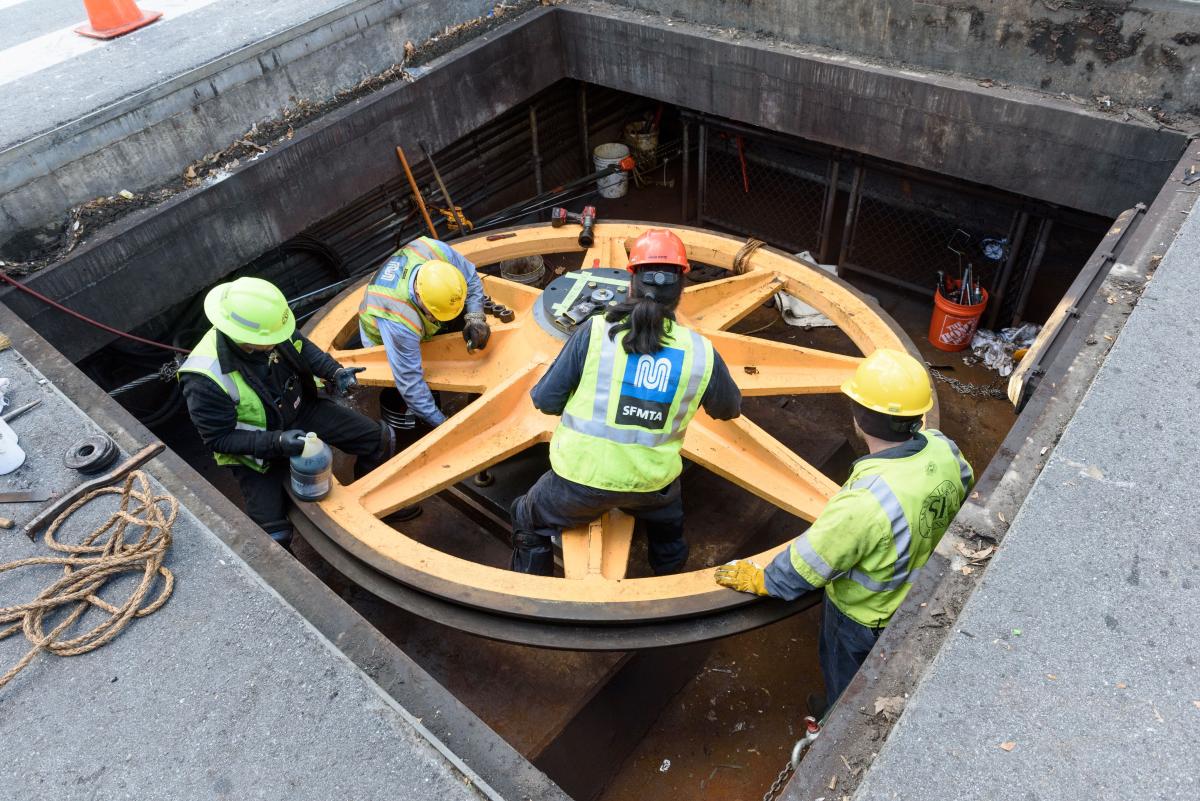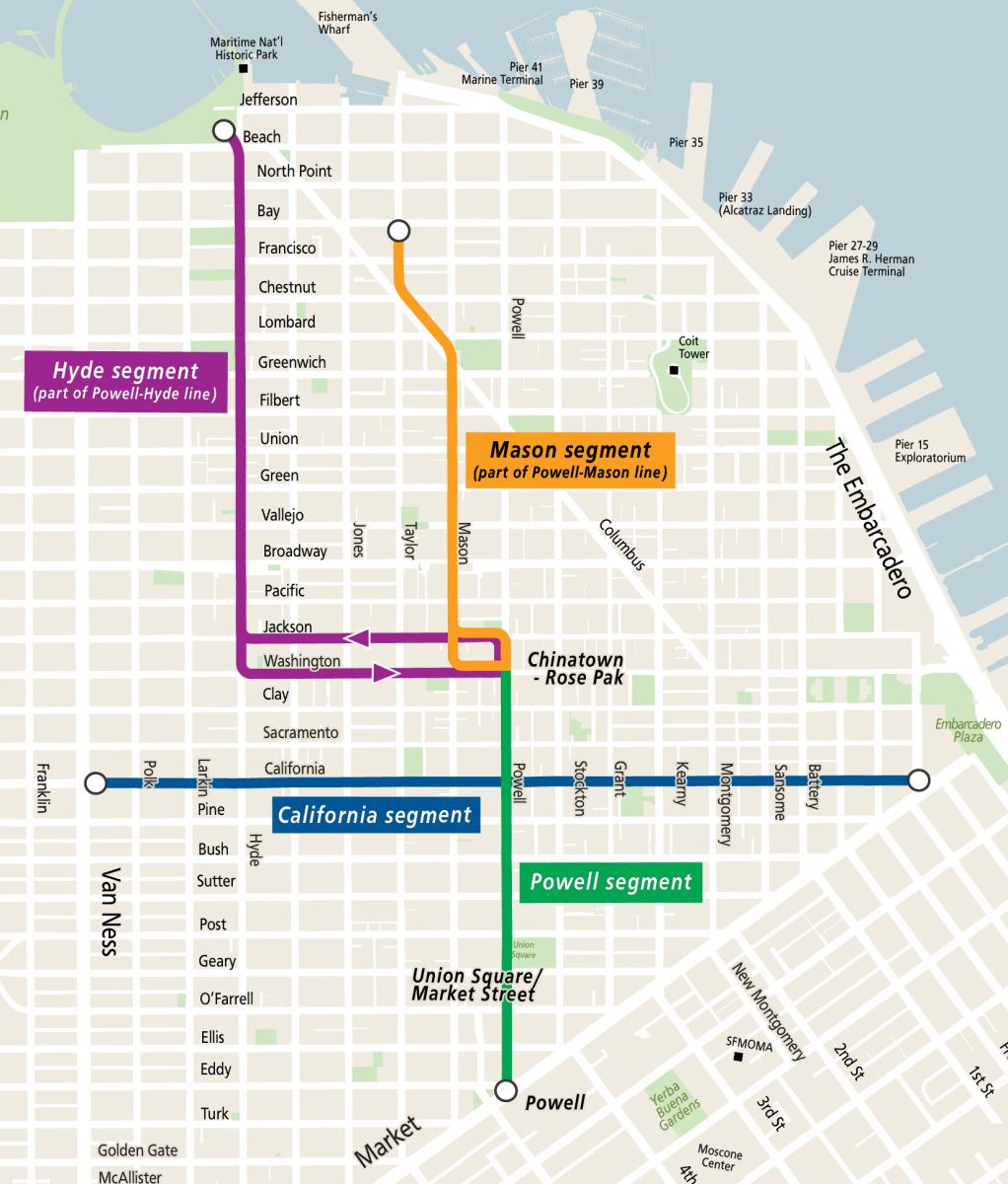
Passengers board the Powell & Hyde cable car near Fisherman’s Wharf.
Our cable car system is over 150 years old, and that means our cable cars sometimes need a little extra love to keep running. Next week marks the start of some major TLC (tender loving care).
Beginning Tuesday, Feb. 18, we'll start repairing a critical part of our cable cars: the sheaves. As our crews make repairs, bus service will replace cable service on one route at a time.
We'll cover how sheaves work and why repairing them is so important to keep our beloved cars moving. Learn why our system is unlike any in the world -- and what to expect as the project progresses.
What are sheaves and how do they work?
Cable cars are able to move because cables pull them forward. This motion requires tension. That's where sheaves come in. Sheaves are large pulley wheels that direct and maintain the tension of the cables. Because of this, sheaves are under significant stress, and they wear out over time due to constant use.

Why we're rebuilding sheaves
For cable cars to operate safely, sheaves need to be in good condition. After taking stock of our cable car parts, we discovered that we need to repair all of the 21 sheaves. These haven’t been replaced since the 1980s.
The catch: San Francisco is the only city in the world that still operates cable cars. As a result, there is no way to simply buy new parts. Our cable car maintenance crews have to rehabilitate each sheave. The work spans from the inside shafts and bearings to the outer perimeter of the wheel.
Keeping the sheaves in good working condition ensures that our cable cars are reliable for the long term. By acting now, we can prevent larger issues and continue to provide reliable trips.
Key details about the Cable Car Sheaves Project
- Scope of work: We’re rebuilding all 21 cable car sheaves.
- Locations: The sheaves are located at each end of our three cable car lines. There are also sheaves wherever the cable cars make turns along their routes.
- Timeline: The project timeline is expected to be mid-February through May 2025. We might need to make adjustments due to weather or other unexpected situations. Visit the project page for schedule and updates.
- Impact: During this work, we will sometimes have to close segments of our cable car routes. Bus shuttles will provide service where work is being done. There will always be at least one cable car segment open for the public to ride while our crews upgrade other sections.
Helping riders enjoy our lovely cable cars
To keep our cable cars running during repairs, our crews will play a game of leap-frog. As they remove one sheave from its vault under the street, they’ll put a fully rehabilitated sheave in its place.
This process will allow us to replace sheaves one-by-one. That way, our work area will be smaller and less impactful on the overall cable car system. With this approach, we will always be able to run at least one cable car.
See the map below for cable car segments that will be affected while we work to rebuild sheaves.

Visit the Cable Car Museum
San Francisco’s cable car system goes back to the late 19th century. It’s also recognized as a National Historic Landmark.
You can learn more on a visit to the Cable Car Museum, which explores the history and mechanics of the cable cars. Admission is free!
For more details on our sheave repair work, visit our Cable Car Sheaves Project webpage.